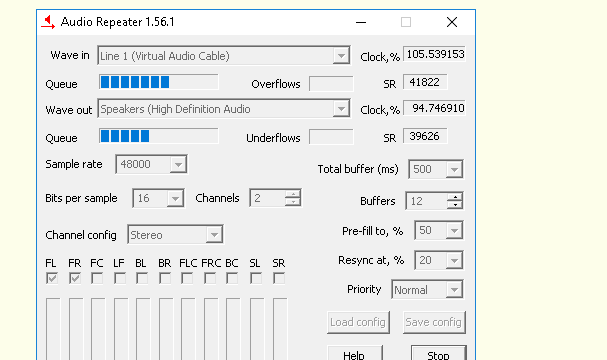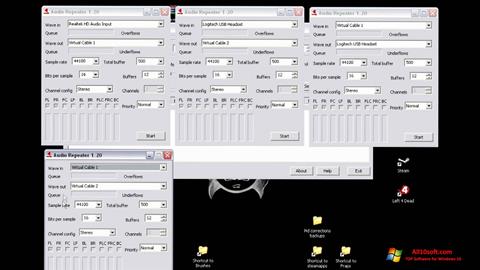

It simply does the work In a few clicks without confusing the user with loads of unnecessary options. It is auto clicker automation software that saves you a lot of time for auto clicking repeatedly. Pacmd load-module module-null-sink sink_name=Virtual_Sink sink_properties=scription=Virtual_Sink You should see no error after running this command. If you open Sound Settings, a new output device should have appeared, named Virtual_Sink. To test this, open and application that outputs sound and select Virtual_Sink. If you use an application with Pulseaudio support but with no way of selecting the sound card, you can set it to output sound through the Virtual_Sink in the Sound Settings. Select the virtual sink in Sound Settings Unfortunately, this sets the virtual sink as default output device for all applications. To use this stream as sound input, you must use an application with Pulseaudio support and select the Monitor of Virtual_Sink as input. Pulseaudio creates a monitor device for each output device that can be used to record what's being outputted. Unfortunately not all applications support Pulseaudio. Load-module module-null-sink sink_name=Virtual_Sink sink_properties=scription=Virtual_Sink To make it permanent, open the configuration file ( sudo gedit /etc/pulse/default.pa) and add the following line: All it takes is to restart Pulseaudio and the Virtual_Sink is lost.Įven worse, not all applications that support Pulseaudio provide a sound device selection dialog.īefore trying a different approach, if this worked for you, you should know that this setup is not permanent.

The Virtual Sink is still there.ĪLSA makes use of a virtual loopback module. Example output:Ĭard 1: Loopback, device 0: Loopback PCM Ĭard 1: Loopback, device 1: Loopback PCM You can view them using aplay -l command. In this example you can see that the virtual devices are hw:1,0 and hw:1,1.


 0 kommentar(er)
0 kommentar(er)
